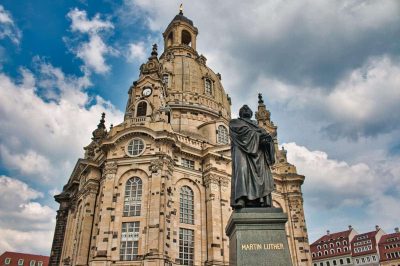There are so many sights in East Germany that it is really hard to choose a few for each state. Nevertheless, there are some outstanding East Germany sights to see that you absolutely have to see!
Sights to see in Berlin (East)
Before you start wondering, of course Berlin is now one united city and the Berlin Wall hasn’t been there for 30 years. But because we’re specifically concerned with the East, we’re dealing here exclusively with the former East Berlin. And there is a lot to discover here!
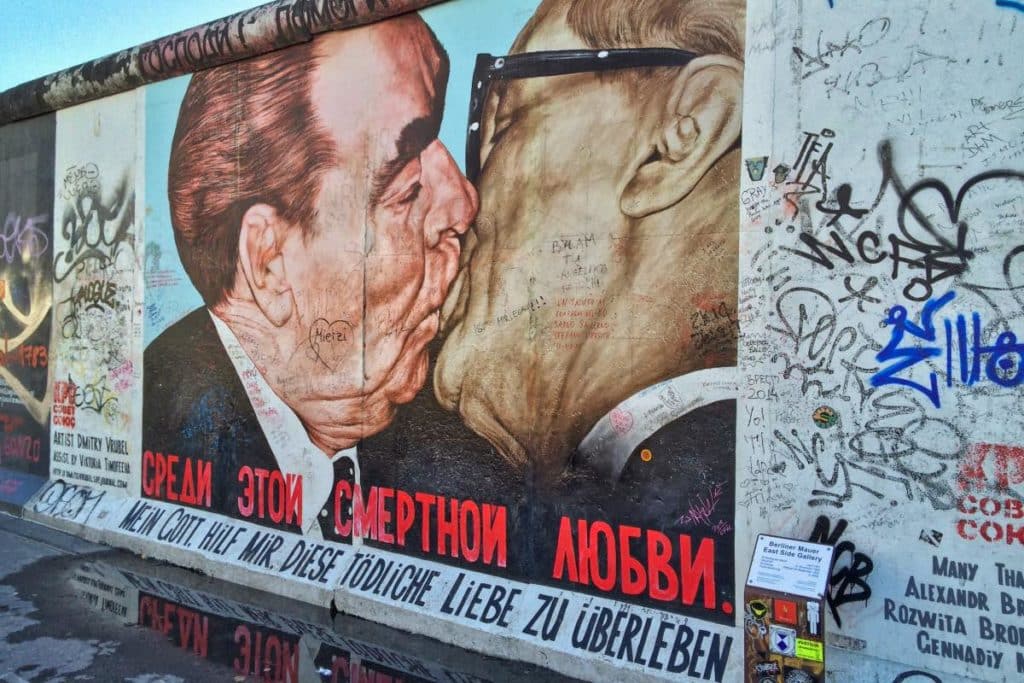
East Side Gallery
The East Side Gallery is one of the largest pieces of the Berlin Wall left. And it is one of the largest open-air galleries in the world. What’s special about the East Side Gallery: Artists painted pictures here in 1990, the year of the fall of the Berlin Wall, which have since been restored several times and convey a bit of the feeling of happiness of this historic moment. My favorite painting, by the way, is Brezhnev kissing Honecker with the caption, “My God, help me survive this fatal love!”
Museum Island
Museum Island has been the treasure chamber of all of Germany since imperial times. It is home to museums that display some of Germany’s most important cultural assets. The buildings were constructed between 1830 and 1930. The museums are thereby divided into:
- Altes Museum – part of the collection of antiquities with sculptures, weapons, gold jewelry and silver treasures of Greek antiquity.
- Neues Museum – contains the Egyptian Museum and Papyrus Collection with the famous bust of Egyptian Queen Nefertiti and exhibitions of the Museum of Prehistory and Early History with finds from Troy along with copies of Schliemann’s gold
- Pergamonmuseum – Architectural structures and Greek and Roman sculptures from the Collection of Classical Antiquities, the Museum of the Ancient Middle East and the Museum of Islamic Art. Of particular interest are the constructions of the Pergamon Altar, the Market Gate of Miletus and the Ishtar Gate from Babylon.
- Alte Nationalgalerie – Sculptures and paintings of the 19th century, including German painter Caspar David Friedrich
- Bode-Museum – includes the Museum of Byzantine Art, the Sculpture Collection with Italian and German sculptures from the early Middle Ages to the 18th century, the Numismatic Collection and parts of the Old Masters Collection of the Picture Gallery
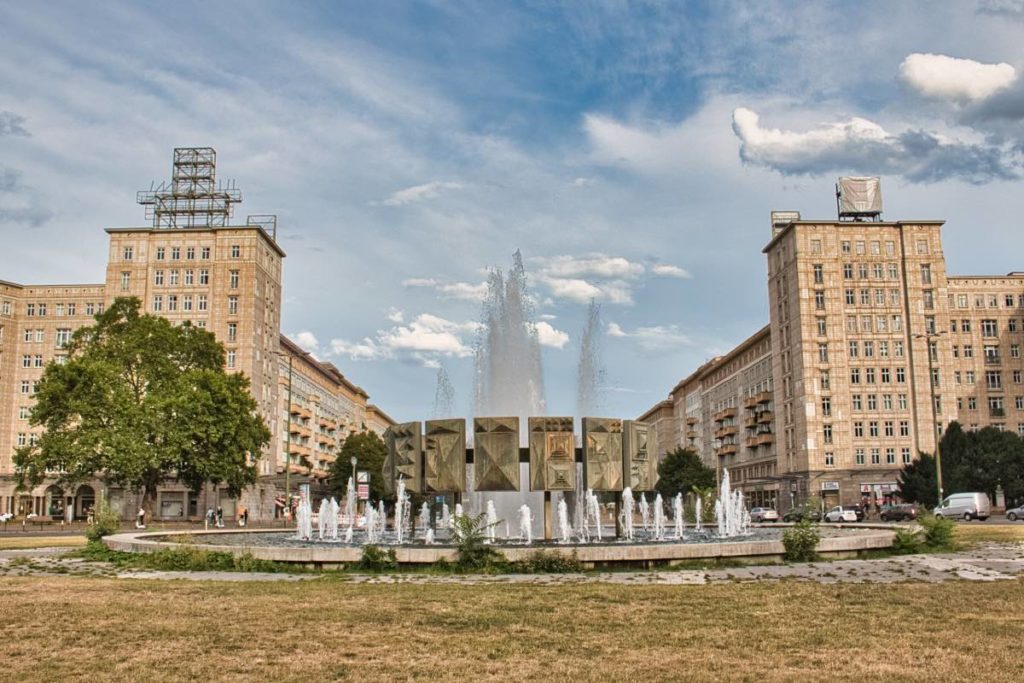
Karl-Marx-Allee
Built as Stalinallee in the early 1950s, today’s Karl-Marx-Allee is the largest continuous ensemble of buildings of socialist architecture in Berlin. This flagship street was supposed to showcase the most modern and best buildings of the GDR. And indeed, it is a microcosm of GDR architecture. For even though the street was originally built in the style of Stalinist neoclassicism, there are also very functional and modern-looking buildings to be seen here. Among the most beautiful are Café Moskau, Kino International and Kino Kosmos, as well as the buildings around Strausberger Platz. Along the street there are many information boards that inform about the history and architecture.
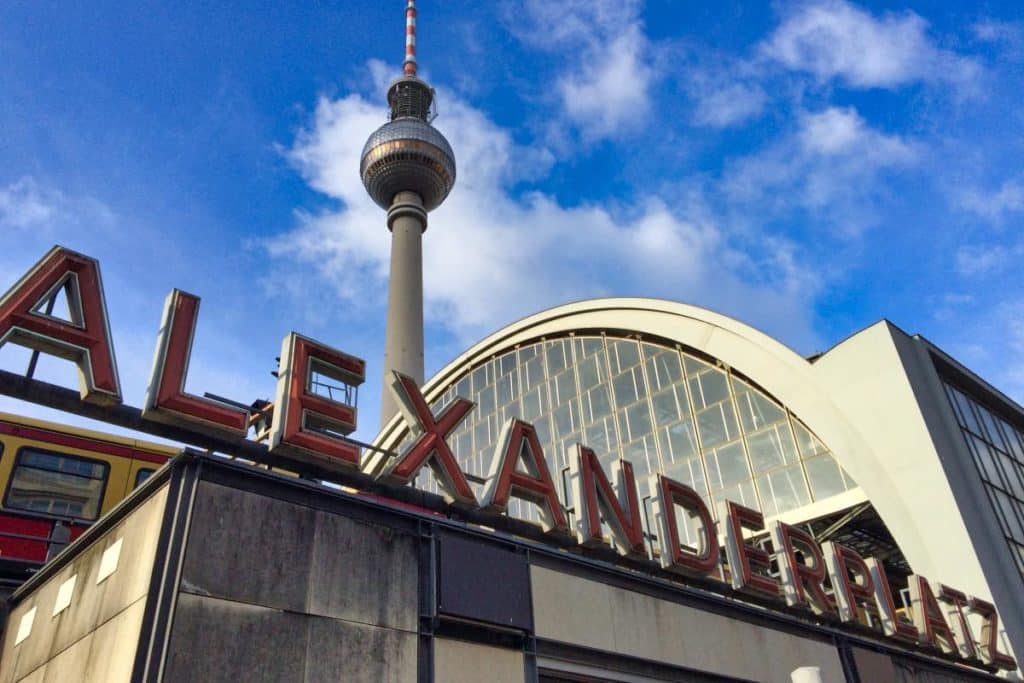
Alexanderplatz
Of course, Alexanderplatz cannot be missing in the list of East Germany sights. Because here are some of the iconic buildings, with which one has often shown the East on television of the Federal Republic of Germany. What only a few people know: Some of the buildings, such as the Berolina House and the Alexander House, were already built in the “Golden Twenties” and have survived to this day.
However, most of the buildings that stand on Alexanderplatz today belong to the style-defining buildings of the GDR. These include, of course, the Berlin TV Tower, from which one has a magnificent view of the city. The Haus des Lehrers (House of the Teacher) with its unique mosaic on the side, today’s Panorama Hotel, the Fountain of Friendship between Peoples, the House of the Berlin Publishing House and the House of Travel are also outstanding buildings of the GDR. Many Berliners and tourists meet for an appointment at the World Time Clock to this day.
Sights to see in Brandenburg
Brandenburg has some of the most famous and beautiful sights to see in East Germany to offer.

Spreewald
Spreewald is one of the most beautiful cultural landscapes in Germany. On a boat tour from Lübbenau you can explore this beautiful region. Some houses can only be reached by boat. You can also rent a canoe and explore the Spreewald yourself. Also worth seeing is the nearby Slavic castle in Raddusch, where you can learn how the Slavic tribes of the region once settled here. In the Spreewald and the surrounding area, you can also find some of the last traces of Sorbian culture in Germany, even though Bautzen is a larger center.

Potsdam and Sanssouci Castle
Potsdam was the residence of the Prussian kings and all important Prussian kings spent most of their time here. Among them was, of course, Frederick the Great, who had Sanssouci Palace built here. Sanssouci is one of the most beautiful palaces in Germany and a real tourist magnet. The palace park is also worth a walk. Also beautiful are the many rivers in the city, the Dutch Quarter, the film studios in the Babelsberg district and the old town.
Neuzelle Monastery
The Cistercian monastery of Neuzelle is a haven of Catholicism – in an otherwise formerly very Protestant, now rather atheistic area. The monastery complex is a true jewel of Baroque architecture. The nave of the monastery church is so magnificently decorated that one can hardly stop marveling. After all, the churches in the area are usually very plainly furnished. Even though it was secularized by the Prussian kings in the 19th century, monks have even been living in the complex again since 2018. Little by little, the monastery is thus to be revived as a religious place.
Brandenburg an der Havel
The city that gave the name to the March and the current state is one of the most beautiful sights in East Germany. Brandenburg is crisscrossed and surrounded by rivers and offers endless opportunities for excursions by boat. The old town, which actually includes three historic districts, is very photogenic.
Sights to see in Mecklenburg-Western Pomerania
In summer, thousands of guests come to the beautiful beaches of the Baltic Sea coast. Even in GDR times, vacationers made themselves comfortable in the vacation homes of the FDGB (communist worker’s union) or their factories. Today people from all over Germany relaxe here. But besides the beautiful beaches, there are also many sights to discover.
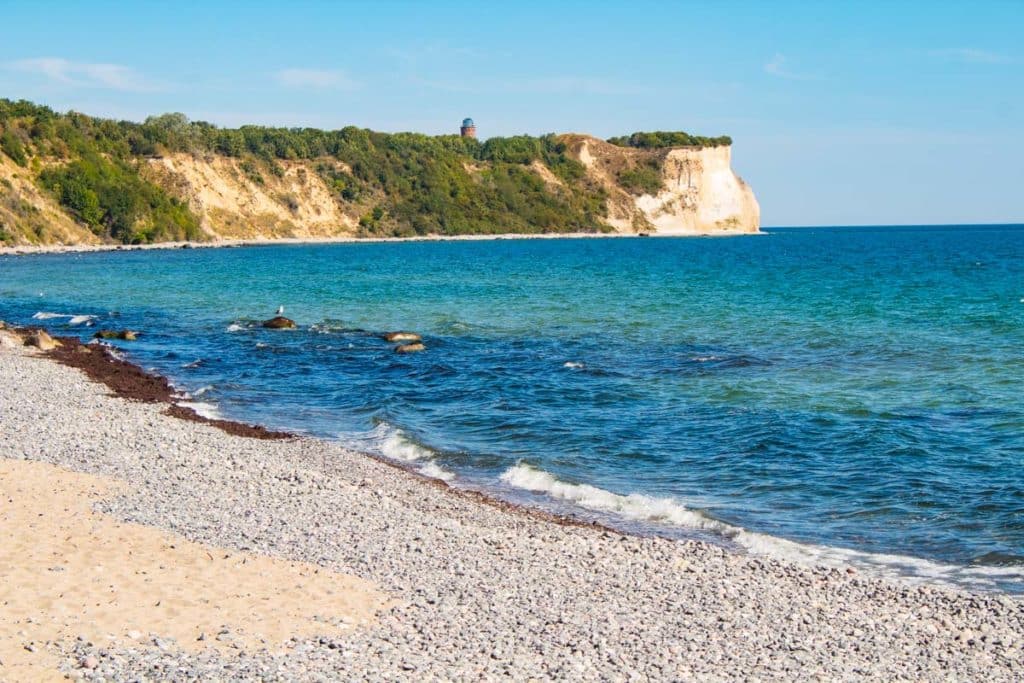
germany sights to see
Depicted by Caspar David Friedrich in one of the most famous paintings of the Romantic period, the Königsstuhl is probably the top attraction of the island of Rügen and the whole state. Today, the chalk cliffs and Cape Arkona not only adorn thousands of postcards, but are also photographed with pleasure by all tourists. A hike to the Königsstuhl is therefore a must. The beach can usually also be accessed, but is closed from time to time due to break-offs of parts of the chalk cliff. You should not miss the seaside resorts of Binz and Göhren and the Granitz hunting lodge.
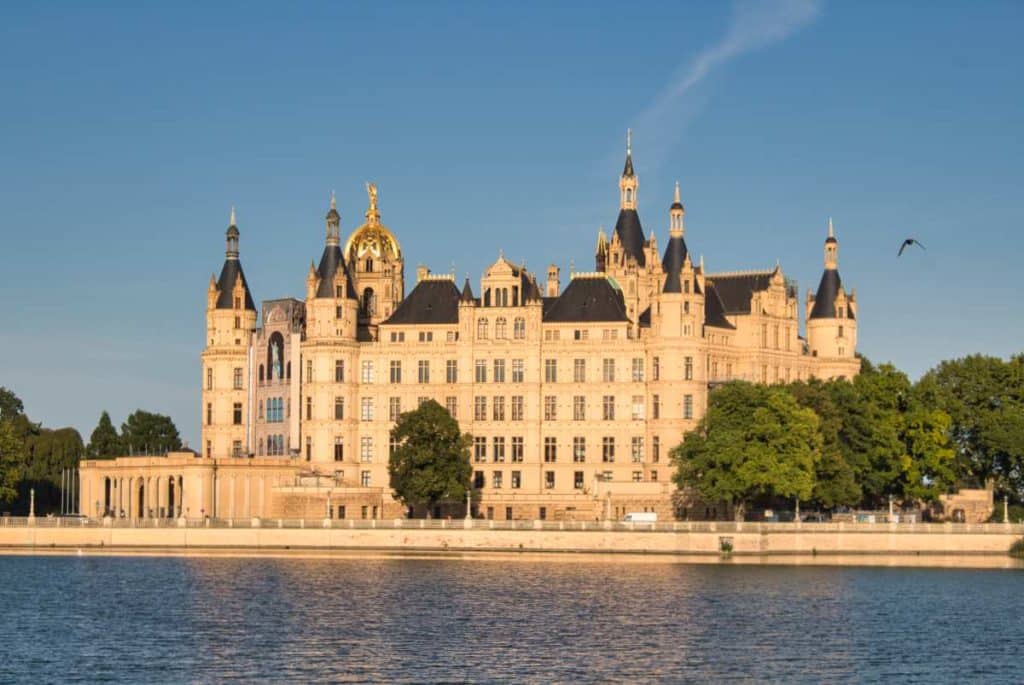
Schwerin Castle
If Neuschwanstein Castle wasn’t always held up as the prototype for all castles in the world, Schwerin Castle probably would be. It is at least as beautiful and looks almost better in photos, because it is located directly on Lake Schwerin. Today, however, it is no longer occupied by a nobleman, but by elected representatives of the people. Schwerin Castle is the building of the state parliament of Mecklenburg-Western Pomerania. The title of the most beautiful state parliament building in Germany is definitely assured!
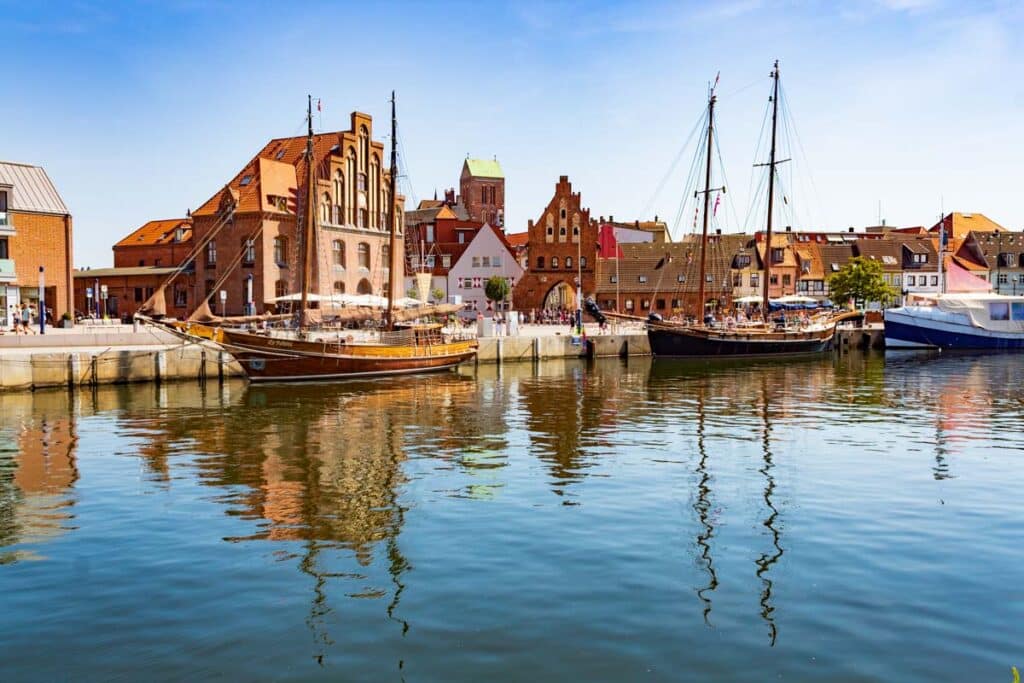
Hanseatic cities Wismar and Stralsund
The two Hanseatic cities of Wismar and Stralsund were declared UNESCO World Heritage Sites in 2002. And indeed, both cities are very photogenic with their old towns of red brick. The marketplaces are among the most beautiful in East Germany. In Stralsund, you can climb the church towers and enjoy a great view of the surrounding countryside. In Wismar, on the other hand, you can walk in the footsteps of the pirate Klaus Störtebeker, who is said to have been born here around 1360.
Mecklenburg Lake District with Müritz
The inland of Mecklenburg-Vorpommern is often neglected because of the Baltic Sea coast. However, the Mecklenburg Lake District with the largest inland lake in Germany, Lake Müritz, is also very beautiful. At the lake district you can easily rent a boat and explore the area that way. Here you can find not only many species of fish, but also hundreds of species of birds. A popular photo motif are the colorful boathouses of Röbel.
Sights to see in Saxony
Saxony – this is the federal state that most people in Grmany think of when they think of the East. Yet Saxon is actually spoken only in parts of Saxony. In some parts of Saxony, the people sound quite different. But what we give the Saxons credit for are their beautiful cities, impressive castles and mountains.
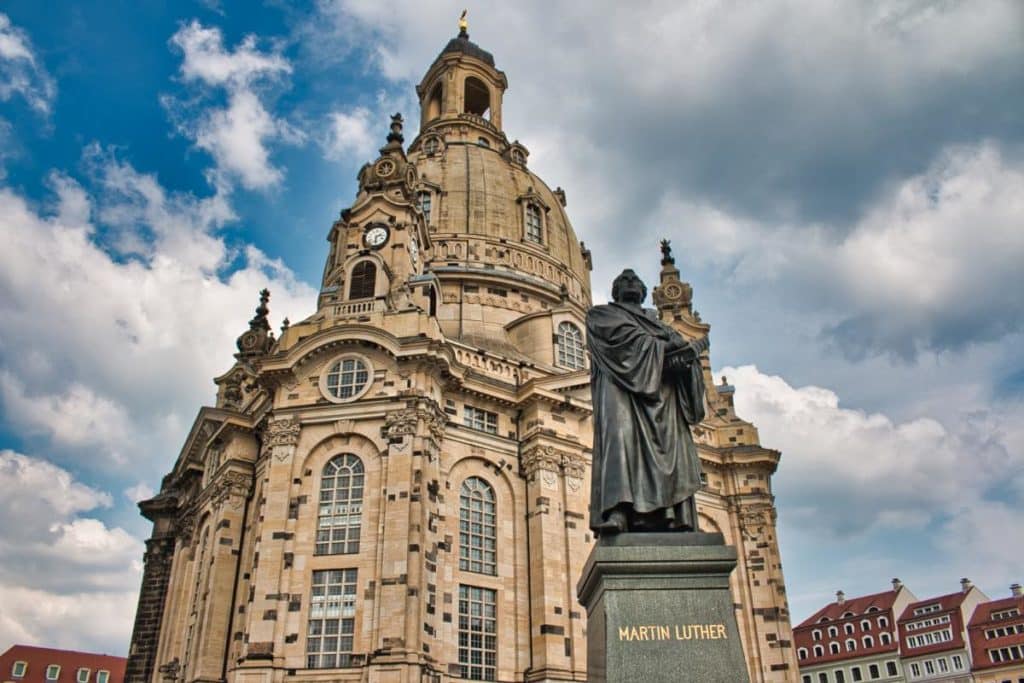
Dresden with Frauenkirche
The Frauenkirche Dresden is now once again one of the most beautiful churches in East Germany. This is amazing, because not much was left of the church by the time of German reunification. Badly damaged by bombs during World War II, GDR authorities had the Frauenkirche blown up. But after the fall of the Wall the reconstruction began. Today, the church with its unique marble interior shines again in its former glory. The Zwinger, the Semper Opera House or the Old Masters Gallery as well as the Prince’s Train are also worth a visit. Dresden is simply a beauty and rightly belongs to the most worth seeing cities in Europe.
Saxon Switzerland and Elbe Sandstone Mountains
Saxon Switzerland and the Elbe Sandstone Mountains with their bizarre rock formations guarantee some of the best hiking places in Germany. A photo of the Bastei Bridge belongs on any good Germany photo calendar. The Königstein Fortress gives the impression that the region has always been a border region as well. The view of the Elbe Valley is especially beautiful. What more could you want?
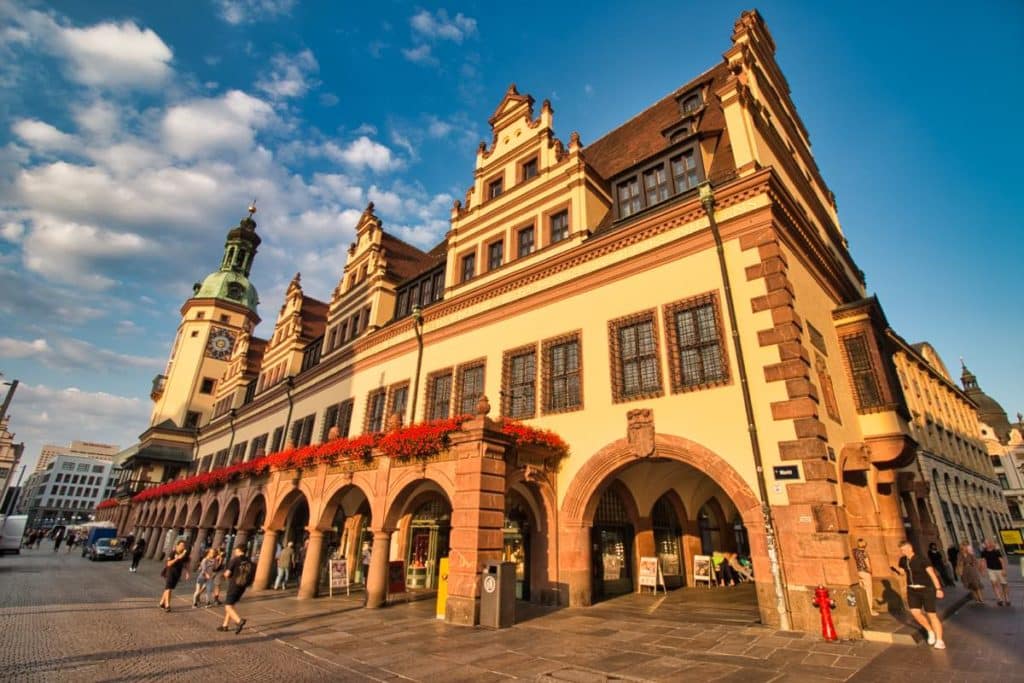
Leipzig
Being the largest city in the Free State of Saxony and a proper student city, Leipzig has experienced a huge upswing in the last three decades. Many new buildings, such as the main building of the university, the Porsche and BMW plants, the City Tunnel and others testify to Leipzig’s development back to its former greatness. From the City-Hochhaus you have a good overview of the city. At the “Karli” you can store well and in Plagwitz it is good to go canoeing and end the evening with a beer in one of the countless pubs. Click here for the Leipzig article.

Görlitz
Until a few years ago, Görlitz had been greatly unknown in Saxony. But that has changed considerably since many Hollywood films were shot here. Now, more and more tourists are discovering the bipartite city on the Neisse River, which also forms the border with Poland. The old town with its many sights has been well renovated. In the Görlitz department store, you can feel the spirit of the early 20th century, when department stores were real temples of consumption. Also because of the atmosphere, the foyer served as a backdrop for the movie Grand Budapest Hotel.
Sights to see in Saxony-Anhalt
I am from Saxony-Anhalt. That not infrequently earns me ridicule. But I don’t really care, because the people who make jokes about Saxony-Anhalt usually don’t even know it. For anyone who knows these sights will only be amazed at Saxony-Anhalt, because I find them all unique in East Germany, Germany and even Europe.
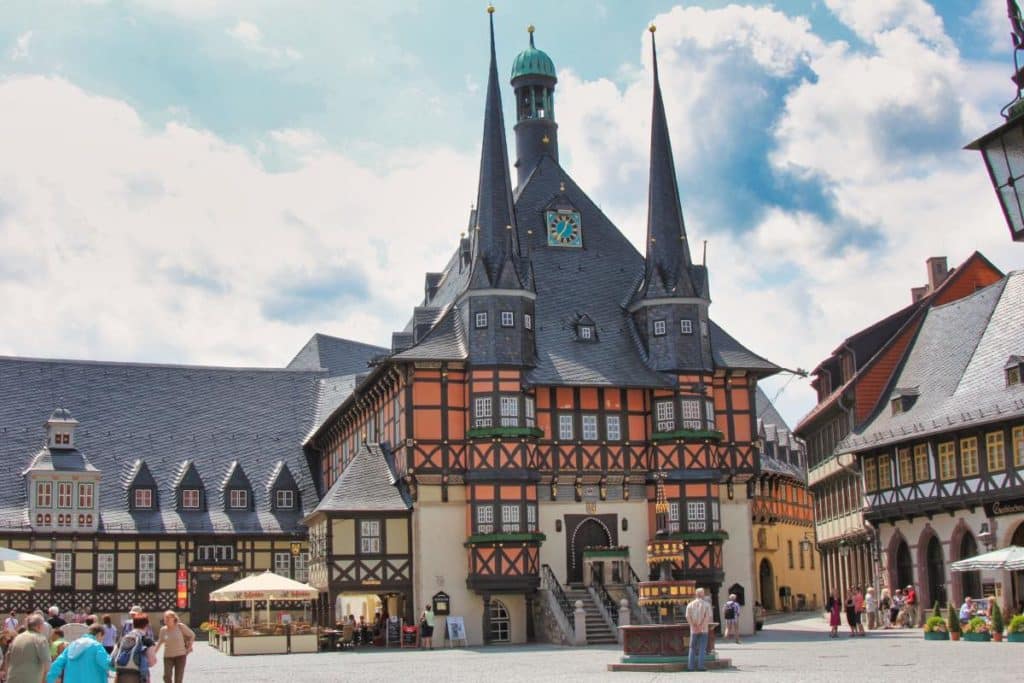
Harz Mountains with Brocken, narrow-gauge railroad and more
Harz is the northernmost low mountain range in Germany and was partly a restricted area during GDR times. Today you can explore the Brocken without any problems – either on foot or with a train with steam locomotives of the Harzer Schmalspurbahnen. The many old towns of the surrounding villages and the mountain villages like Schierke are also beautiful. Don’t miss: Wernigerode old town and castle. The Brockenbahn also departs from here!
Quedlinburg
Actually, Quedlinburg is also in the Harz Mountains. But Quedlinburg is so beautiful that it needs its own mention. The old town with its hundreds of half-timbered houses can easily compete with other half-timbered towns in Germany. From the collegiate church, whose first buildings were erected under Henry I, you have a beautiful view of the Harz Mountains and the surrounding old town. Incidentally, it was here that the state of Lithuania was first mentioned. This UNESCO World Heritage Site should not be missed on any tour of eastern Germany.
Wörlitz Park
Incidentally, there is no shortage of UNESCO World Heritage sites in Saxony-Anhalt. The Dessau-Wörlitz Garden Kingdom also holds this title. The Wörlitz Park is therefore one of the most beautiful attractions in the east and, by the way, is well situated in terms of transport on the Autobahn 9 near Dessau. Here you can stop on a trip from Munich to Berlin or to the Baltic Sea. The park offers a real oasis of peace with artificial lakes, many different types of plants and beautiful buildings from the time of the Anhalter principality.

Naumburg Cathedral
Saxony-Anhalt also has some of the most beautiful churches in eastern Germany to offer. Magdeburg Cathedral or Halberstadt Cathedral are also beautiful, but not yet recognized as UNESCO World Heritage Sites. Therefore, at this point we can especially highlight the Naumburg Cathedral, which definitely belongs on any list of sights in eastern Germany with the founder figure Uta. It was here that a Protestant bishop was installed for the first time. Nikolaus von Amsdorf was a close companion of Martin Luther. The old town of Naumburg and the wine region around Freyburg also invite you to explore.
Sights to see in Thuringia
For some, Thuringia is the cradle of Germany. Wartburg Castle as the site of the Wartburg Festival and thus the stronghold of an all-German national movement, Weimar as the metropolis of Weimar Classicism and the Bauhaus are known throughout the country. Thuringia is located in the heart of Germany and is also close to the hearts of many. Looking at the sights of the country, you will understand why!
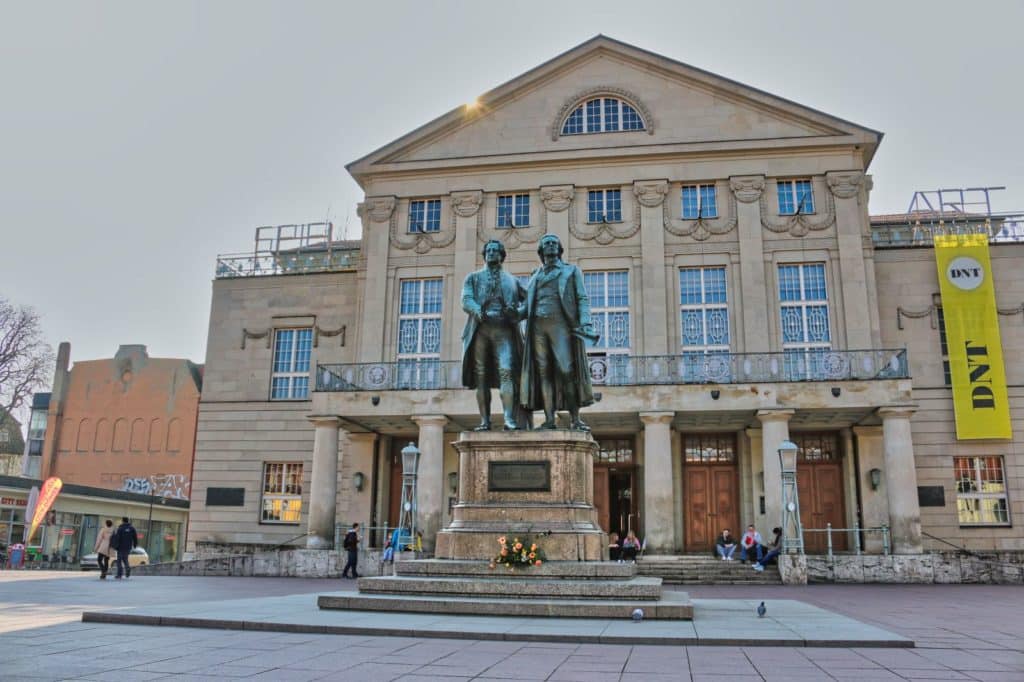
Weimar
What would German literature be without Weimar? At the beginning of the 19th century, this small town in Thuringia was the meeting place for everyone who was anyone in the literary world: Goethe, Schiller, Herder and many more. For this reason alone, Weimar Classicism is not only a world heritage site, but also belongs on every bucket list for East Germany. Goethe House, Schiller House, the princely crypt with the tombs of the two, the Anna Amalia Library and the many palaces of the patrons and sponsors of the classical period allow an impressive journey back in time to this German era.
Hainich
One of the last true primeval forests in Europe is the Hainich beech forest. The Hainich National Park is also home to a group of wildcats, otherwise you can hardly find these animals in the wild in Germany. From the treetop path you have a fantastic view over this UNESCO World Heritage Site.
Erfurt with old town, cathedral and Krämer bridge
Erfurt is one of the most beautiful state capitals in Germany. The Krämerbrücke can compete with the Ponte Vecchio, which also offers entire houses on a bridge. The half-timbered houses invite you to discover them. Martin Luther was once a student in the Augustinian monastery. From the stairs to Erfurt Cathedral, you have a fantastic view of the city. The old church building, on the other hand, impresses with its fine Gothic architecture.
Rennsteig
The Thuringian Forest is also a beautiful natural landscape. Even Goethe once went hiking over the Rennsteig. Here you have fantastic views of Thuringia and can enjoy them with Thuringian specialties like bratwurst and good beer.
Thematic sights to see in several federal states
Surely you have already asked yourself why the Wartburg is still missing, which is one of the most beautiful sights in Germany. Of course, it is also represented here. However, we have placed it in a row with other sights.
Luther sites in Wittenberg, Eisleben and Wartburg Eisenach
The great Protestant reformer Martin Luther is one of the most famous figures in German history. After all, he openly criticized the church in the 16th century and campaigned for reform. The first Protestants changed the history of the whole world. And the most important places of Martin Luther’s work are among the most significant sights in East Germany.
I myself come from the Luther town of Eisleben and, like Martin Luther, was also born there. In Eisleben you can visit not only the house where Luther was born and the house where he died, but also St. Peter’s Church, where he was baptized. He also preached his last sermon here from a Pulpit in St. Andrew’s Church, which is now named after him. There is a large Luther monument on the market square that makes a great photo subject. He went to school in nearby Mansfeld.
Wittenberg also has a Luther monument. The reformer taught at the university here. And he is said to have nailed his famous 95 theses to the door of the castle church. Wittenberg also honors important companions of Luther such as Philipp Melanchton, who lived here too.
Luther had hidden at Wartburg Castle in Eisenach under the name Junker Jörg while being persecuted by the church. Here he is also said to have thrown a barrel of ink at the devil, according to a legend. Other places associated with Luther include the Augustinian monastery in Erfurt, Hartenfels Castle in Torgau and the city of Naumburg.
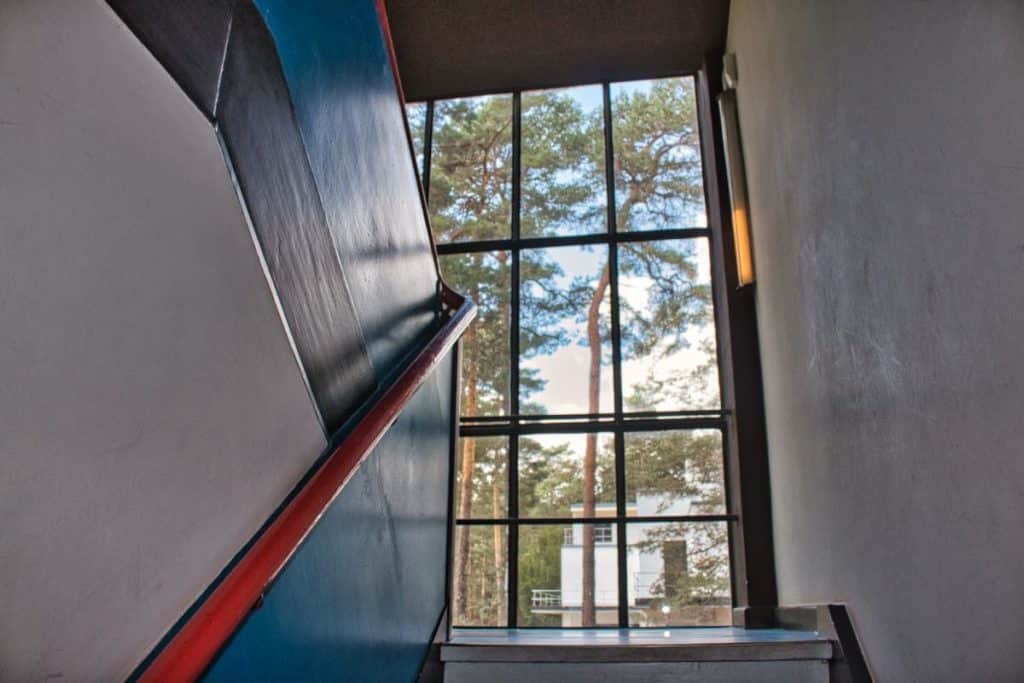
Bauhaus in Weimar and Dessau
The Bauhaus is one of the most outstanding schools of architecture in the world and was, in a sense, the architectural cradle of modernism. Some of the most important artists of the twenties and thirties of the 20th century worked here: Walter Gropius, László Moholy-Nagy, Lyonel Feininger, Wassily Kandinsky or Ludwig Mies van der Rohe.
The school’s main building, which today belongs to the Bauhaus University, is located in Weimar. You can also visit the first joint project house, the Haus am Horn, in Weimar. The new Bauhaus Museum, which tells about the work of the Bauhaus in Weimar, just opened in 2019. You can find more buildings associated with the Bauhaus in our article on the Bauhaus Weimar.
When the nationalists came to power in Thuringia in 1925, funding for the Bauhaus was cut. Hugo Junkers then invited the Bauhaus to Dessau. Here, the now iconic building was constructed as a teaching facility and work continued. It was here that collaboration with industry began and the development of some groundbreaking products such as the B3 club chair. The Dessau Masters’ Houses are experimental buildings where the teachings of the Bauhaus were applied. The city is home to many more Bauhaus-designed buildings that were constructed until the Nazis took over power here as well in 1931.


